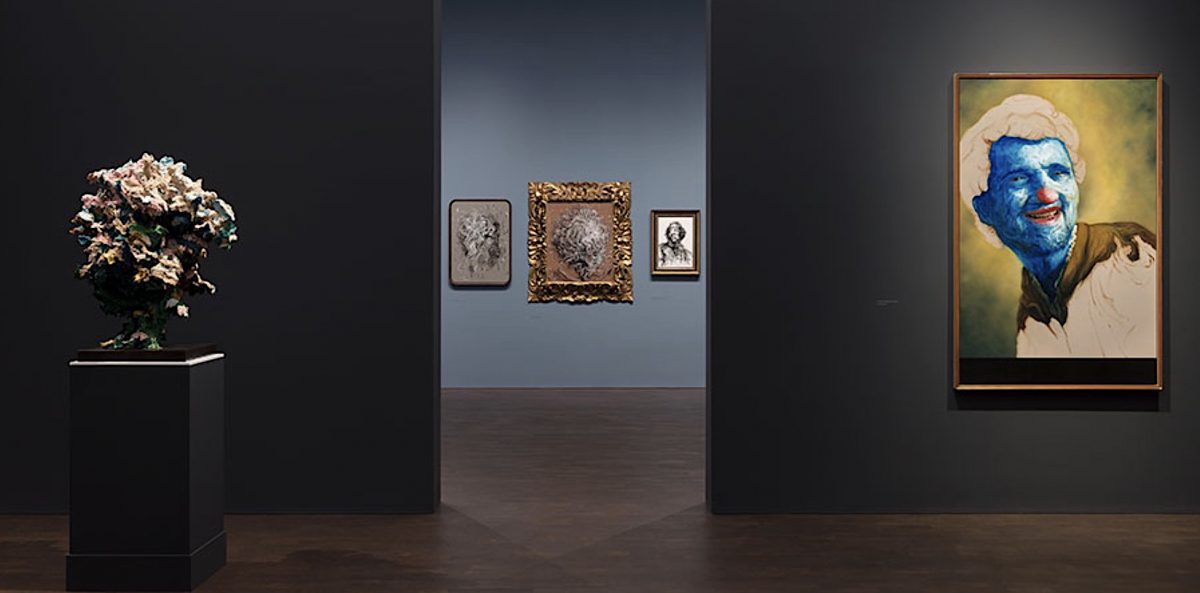The more I looked at this show, the more I felt that I was both the right and the wrong person to be attempting to review it. – ELS
The reasons for this are complex. There was a period in my life during which I was if only marginally, a dealer in Old Master drawings. That is, I acted as a scout for an American dealer in wares of this sort, and, in particular, I acted not only as a proxy buyer for her at then frequent auctions held at Christie’s and Sotheby’s featuring this category of material, but also served as a conduit for drawings coming into the rooms from various American collectors who formed part of my partner’s network, who were anxious to get rid of ‘not-quite-right’ material that was cluttering up their collections. In other words, I was part of a regular upgrading process. There was no shortage in the market items of this kind, and they often sold for rock-bottom prices.

Most of these second- and third-quality offerings were made through Christie’s, which was at that time struggling with competition from Sotheby’s, then led by the formidable Peter Wilson. Dear dead days! The balance of power has considerably shifted now.
Glenn Brown’s current show at Gagosian consists very largely of simulacra of drawings of this kind, made using a somewhat different range of materials – ‘Indian ink and acrylic on the panel’, for instance – and often, though not always, displayed in would-be period frames.
The titles given to these works are inconsistent. Sometimes mysterious – a pair of heads entitled Sizewell C, for instance. Sometimes vaguely appropriate – a monochrome baroque ceiling design labelled Let’s Make love and Listen to Death from Above. Sometimes deliberately baffling – a head with a bright green complexion and a red nose, entitled They Slipped the Surly Bonds of Earth and Touched the Face of God. Just occasionally the title offers a frank acknowledgement that what you are looking at is copied from some earlier artist, the Rococo master Francois Boucher, for example.
As you enter the show you meet a poem taken from Shakespeare’s late play Cymbeline:
Fear no more the heat o’ the sun, Nor the furious winter’s rages; Thou thy worldly task has done,
Home art gone, and ta’en thy wages: Golden lads and girls all must, As chimney-sweepers, come to dust.
It’s hard to know to whom this is meant to apply. Is it to you, the spectator? Or is it a despairing self-admonition, offered by the artist to his own creative self?
The fact is that the images, when they stick to black-and-white, have a lot of energy. The whirling, swirling lines have a kinetic force, which maybe exceeds that of the Baroque and Rococo upon whom the images seem to be based. The ones in colour I tend to find garish and hideous.
What I’m left wondering about is the kind of culture this emerges from. If there is one message the show leaves us with it is that true visual inventiveness is dead. That the only thing left to do is to seek out fragments of the past, and to repeat them with twiddly bits added.
But maybe, as I have said, to begin with, I’m the wrong audience for these images. With my long immersion in the world of not-quite-the-best-quality Old Master drawings, the debris of a dead phase of culture, any appreciation I might have for them is inevitably blunted – ‘come to dust’, as Shakespeare’s lyric puts it. Been there, done that.
Words: Edward Lucie-Smith Photos: by Lucy Dawkins © Courtesy Gagosian Gallery
Glenn Brown ‘Come To Dust’ Gagosian Grosvenor Hill, London Until 17 March

